Below are pictures of aspects and symptoms of sweet chestnut blight, caused by the fungus Cryphonectria parasitica.
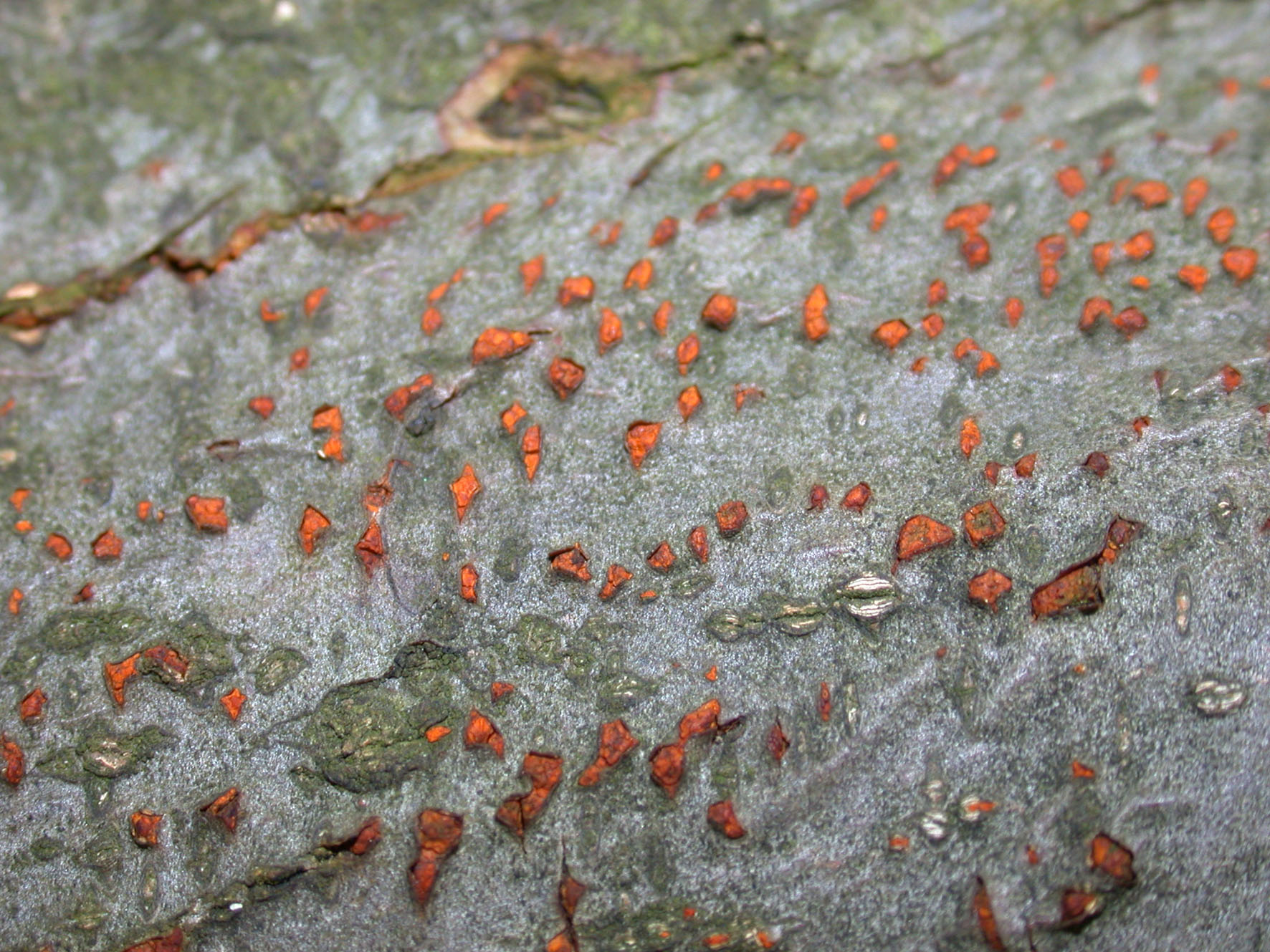
A close-up view of the fruiting bodies of Cryphonectria parasitica (above). Picture: T. Kirisits
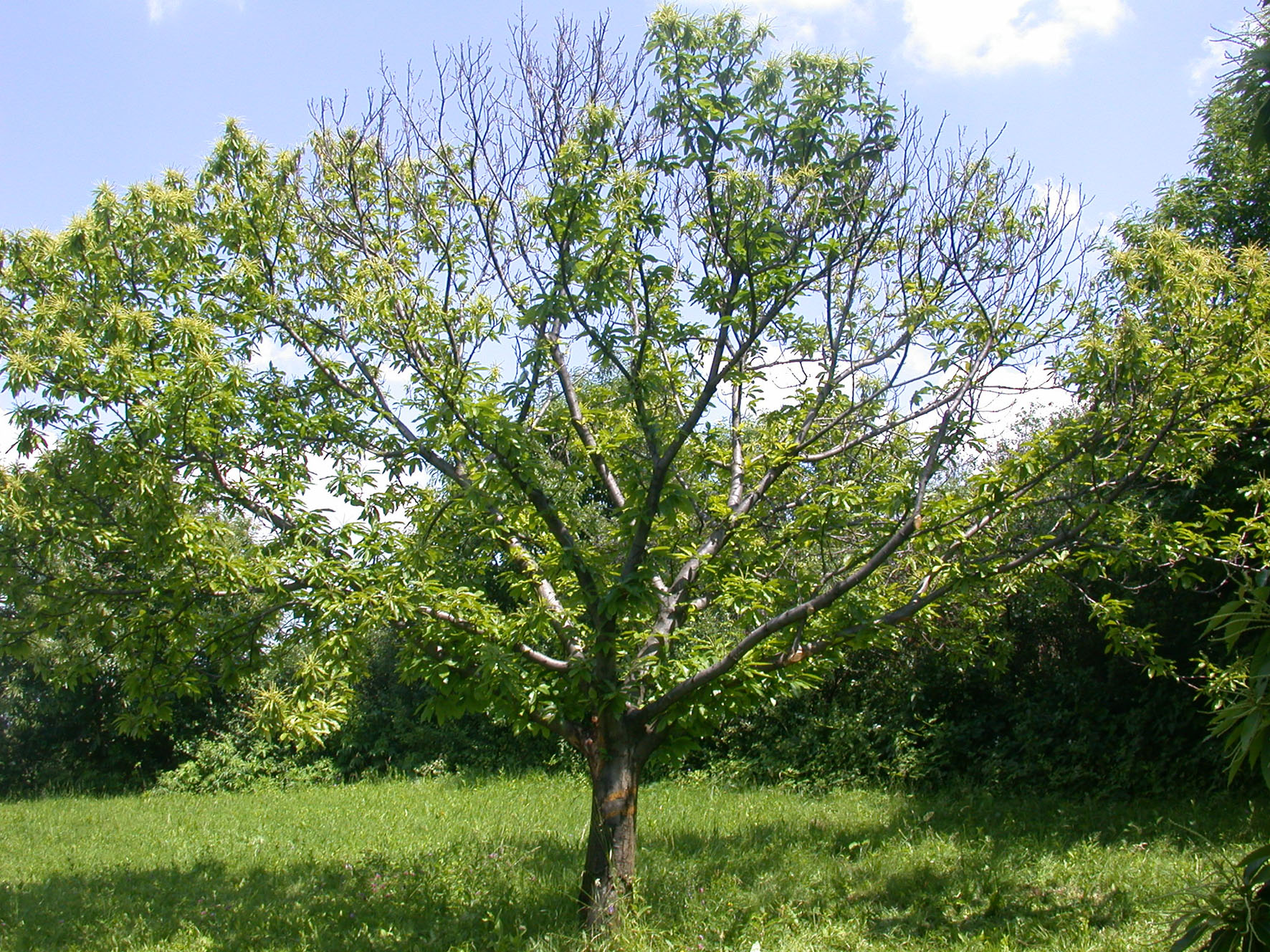
A European sweet chestnut tree (Castanea sativa) with dieback caused by sweet chestnut blight. Picture: T. Kirisits
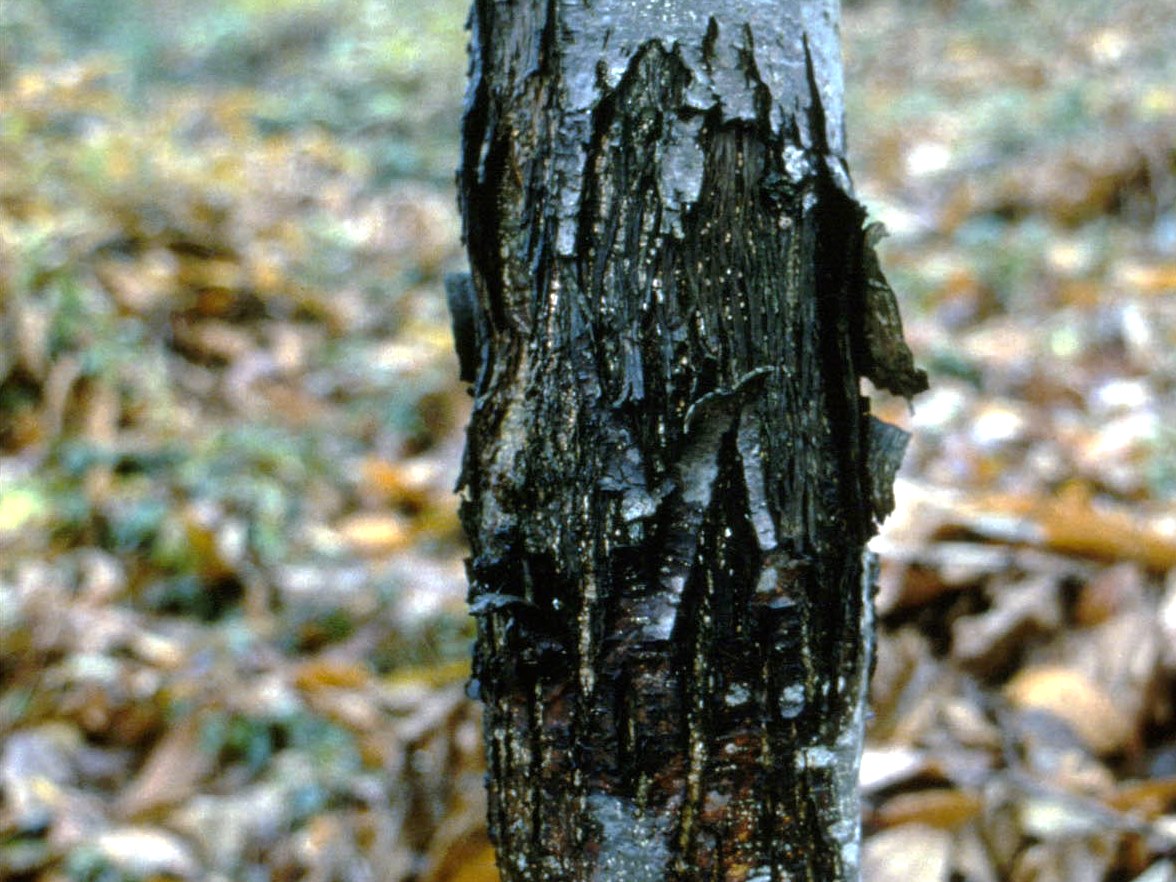
A canker on a sweet chestnut tree caused by a hypovirulent strain of Cryphonectria parasitica. See ‘Long-term prospects’ on the sweet chestnut blight main information page for more information about hypovirulence. Picture: T. Kirisits
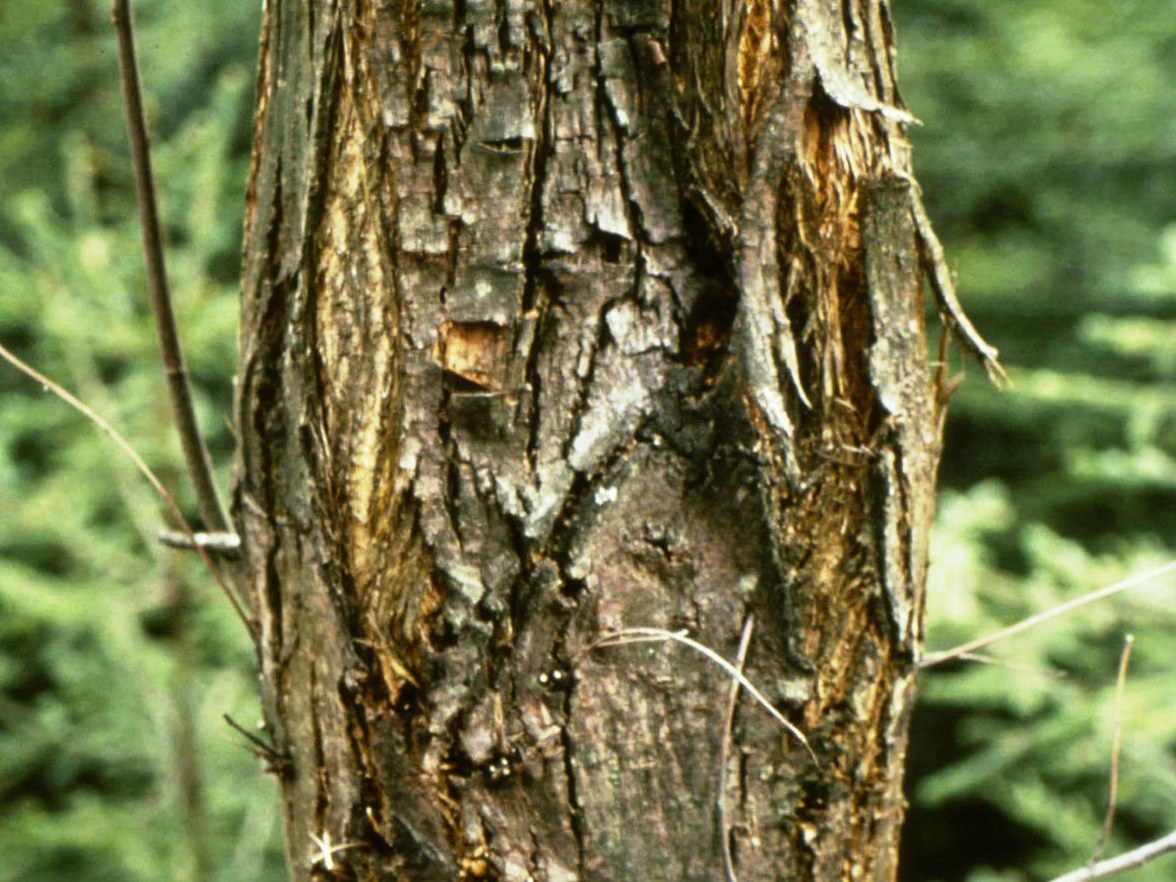
A canker caused by sweet chestnut blight. Picture: T. Kirisits
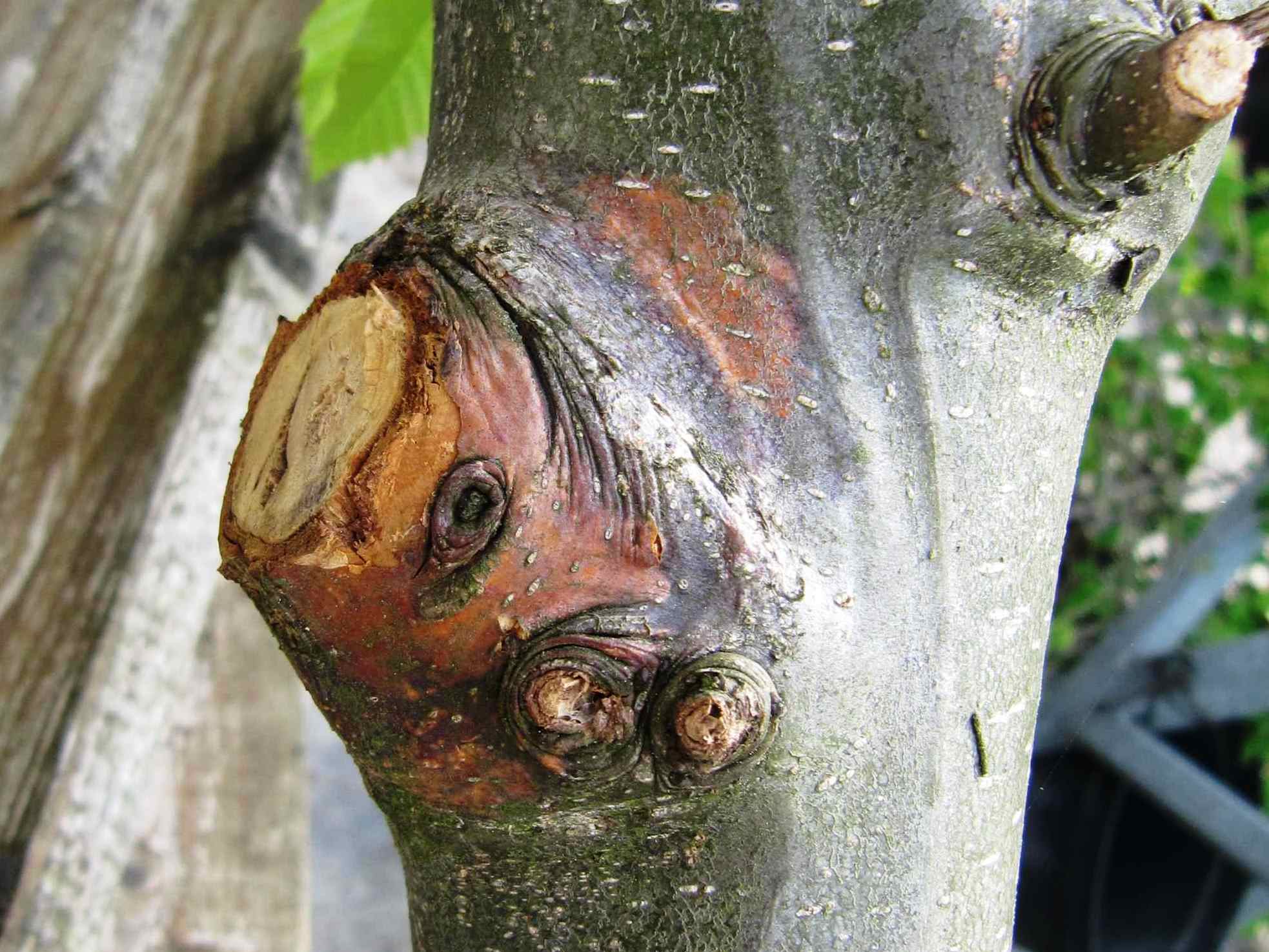
A C. parasitica lesion on a cut branch of sweet chestnut. Picture: D. Rigling
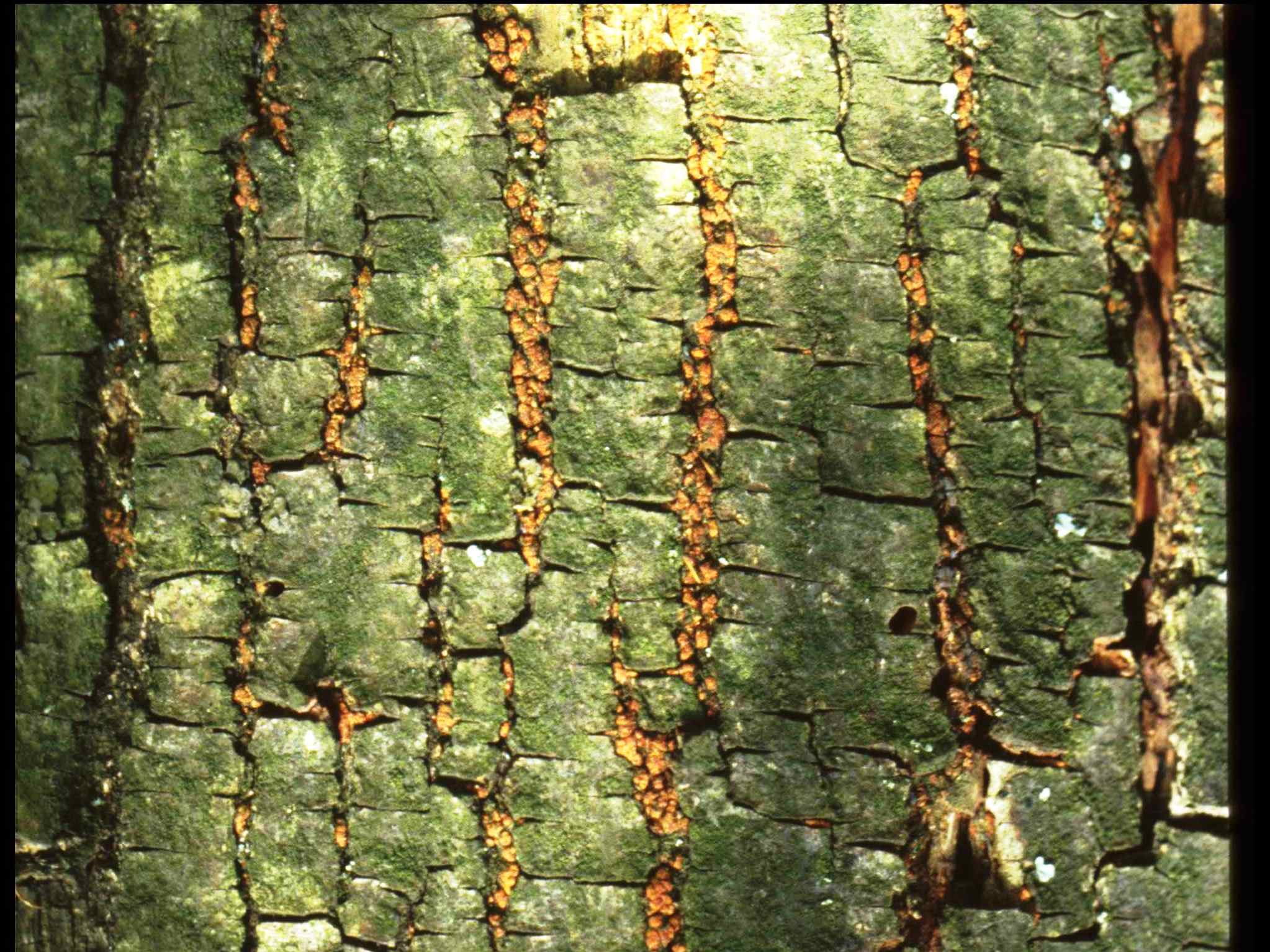
C. parasitica sporulation in sweet chestnut bark cracks and fissures. Picture: D. Rigling
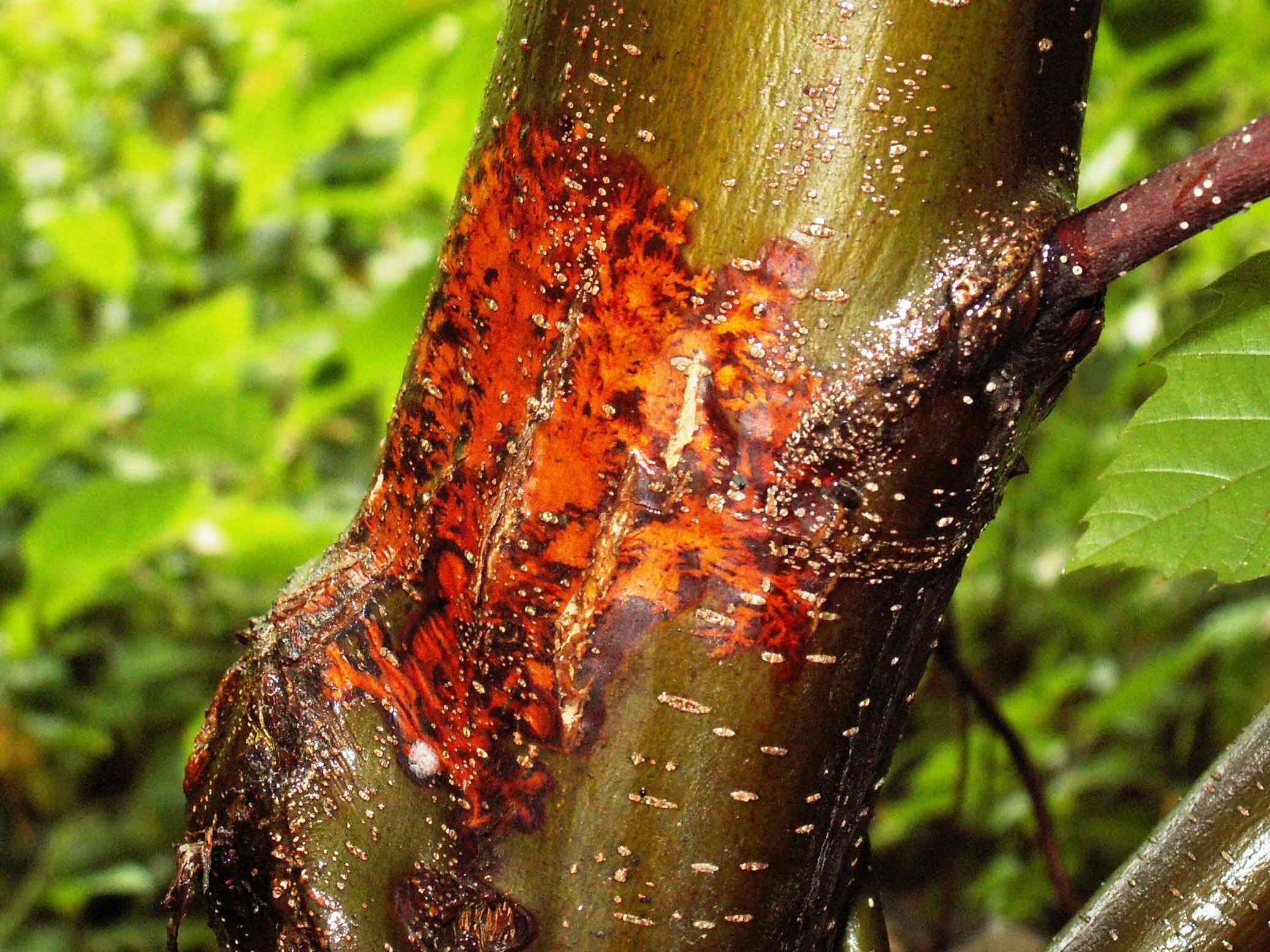
A young C. parasitica lesion. Picture: D. Rigling
Back to sweet chestnut blight main tools and resources page